 Guest post by Meg Pontecorvo What's cooking? My novella, Murder in the Generative Kitchen — oh, wait. It’s done — and ready to serve! For quite some time now, I’ve measured the ingredients with care, chopped, sifted, stirred, adjusted the seasonings, then, hmm, baked? Braised? Simmered? No, now that the novella is finished, I need to can the food analogies--except, obviously, they’re too tempting. Indeed, early reviewers have also yielded to the temptation, perhaps impossible to resist, given the novella’s theme of cooking in the future. But no — I’ll set Murder in the Generative Kitchen on the back burner for a minute to marvel at how often we adopt food analogies to describe our experience with books, no matter the subject. Some books we devour; others leave a sour taste in our mouths. Clever plotting is delicious, while poor plotting — as full of holes as Swiss cheese — is hard to swallow. We commonly say that readers are voracious, especially readers of genre fiction, who may relish one particular genre — say, Thrillers or Mysteries — and find other genres stomach-turning. Romance novels can be sweet, or spicy, or both. If habitual readers go too long without a book, we feel starved, and crave the next one. I know that some reviewers dismiss genre fiction as being as addictive as potato chips (and therefore not nutritious). But we genre readers take such judgments with a grain of salt — or, really, a whole shaker full. Good Science Fiction, in particular, offers plenty of food for thought, and food for thought doesn’t have to be unpalatable gruel. Having acquired the taste for genre fiction, we savor every page. 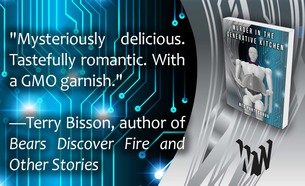 Oh no — now food metaphors themselves are becoming like those potato chips. But seriously, I find it fascinating that food analogies lend themselves so easily to how we understand, and try to describe, book consumption. In their fascinating study, Metaphors We Live By, linguists George Lakoff and Mark Johnson would classify them as a structural metaphor “ideas are food”: one of the ways we try to make abstract experience concrete. Perhaps such a classification is especially appropriate for those of us who read e-books, which lack physical presence in the world. But for the rest of us, a book is a physical object experienced through the senses: the size and weight of the volume in the hand, the look of the art on the covers and of the typeface on the pages, the smell and feel of the paper. We take books with us to the most intimate, yet ordinary, places: we curl up with them in bed; we balance them above the water in our baths; we prop them on the kitchen table during meals. So associating books with a physical need, like eating, feels logical — and natural. Books nourish us. With that in mind, I will take Murder in the Generative Kitchen off of the back burner and place it, with a flourish, on the table: your table. As a novella, it’s not a banquet, nor is it fast food, but mixed, instead, to be “just right.” And no, don’t expect this rather dystopian satire to be Chicken Soup for the Soul (a series that I think of as cheezy). But I hope the book gives you pleasure — and, yes, food for thought. Will there be dessert? Not yet — but I’m planning a second course. So please, pardon me while I slip back into the kitchen — to cook up the sequel! 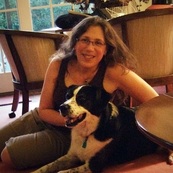 A writer and artist dedicated to multiple genres, Meg Pontecorvo earned an MFA in Poetry Writing from Washington University in St. Louis and is a 2010 graduate of the Odyssey Writing Workshop. Meg has published a novelette, “Grounded,” in Asimov’s, and her artwork in collage and pen has been featured in experimental video performances in the Bay Area. A native of Philadelphia, she grew up in the Midwest and now shares a small apartment with her partner and cats in San Francisco, where she cooks in a tech-free kitchen.
0 Comments
Happy Book Birthday to MURDER IN THE GENERATIVE KITCHEN by Meg Pontecorvo, a science fiction novella with a lot to say about artificial intelligence, the justice system, and the future of high-tech kitchens. Get your copy today in either ebook or paperback, and then let us know what you thought of it by leaving a review on Amazon or Goodreads! Here's what early readers had to say: "Mysteriously delicious. Tastefully romantic. With a GMO garnish." "With Murder in the Generative Kitchen, new author Meg Pontecorvo cooks up and dishes out for you not one, not two, but three original sci fi premises. Enjoy and digest them well!" “Meg Pontecorvo's debut combines three of my favorite things: virtual reality, AI, and a good murder mystery. A great read. This book made me want my own generative kitchen, as long as it doesn't come with a recipe for death.” "Murder in the Generative Kitchen by Meg Pontecorvo is a compact little story with a lot to say. Readers will find a fresh take on Asimov’s three laws, see a twisted future where vacations are paid for by the courts, and learn that the same old arguments will still be contested long after we’re gone." Buy now: Ebook Amazon Kindle Barnes and Noble Kobo iTunes Trade Paperback Amazon Barnes and Noble World Weaver Press online store About the Book 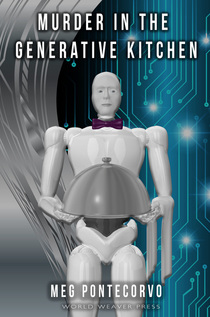 With the Vacation Jury Duty system, jurors can lounge on a comfortable beach while watching the trial via virtual reality. Julio is loving the beach, as well as the views of a curvy fellow juror with a rainbow-lacquered skin modification who seems to be the exact opposite of his recent ex-girlfriend back in Chicago. Because of jury sequestration rules, they can’t talk to each other at all, or else they’ll have to pay full price for this Acapulco vacation. Still, Julio is desperate to catch her attention. But while he struts and tries to catch her eye, he also becomes fascinated by the trial at hand. At first it seemed a foregone conclusion that the woman on trial used a high-tech generative kitchen to feed her husband a poisonous meal, but the more evidence mounts, the more Julio starts to suspect the kitchen may have made the decision on its own. About the Author A writer and artist dedicated to multiple genres, Meg Pontecorvo earned an MFA in Poetry Writing from Washington University in St. Louis and is a 2010 graduate of the Odyssey Writing Workshop. Meg has published a novelette, “Grounded,” in Asimov’s, and her artwork in collage and pen has been featured in experimental video performances in the Bay Area. A native of Philadelphia, she grew up in the Midwest and now shares a small apartment with her partner and cats in San Francisco, where she cooks in a tech-free kitchen. Follow her author page on Facebook. by Kristen Bates Unless you have a room the size of the Rivendell library in The Lord of the Rings, you probably don’t have enough space to contain the collection of books you desire. Thankfully, with the advancement of technology, you can have access to millions of books on just a single tablet. Whether you are Team Kindle, Team iPad, or Team Nook, the accessibility of a plethora of books on your eReader is undeniably useful. However, it can be difficult figuring out a way to get an eBook purchased outside of your eReader’s domain onto your eReader. The process looks daunting but is actually a lot easier than you think. Rather than have you look up a bunch of resources, we here at World Weaver Press have done all the work for you! After you read this, you’ll be an expert on transferring eBooks to your very own eReader. Transferring Non-Amazon eBooks to your Kindle 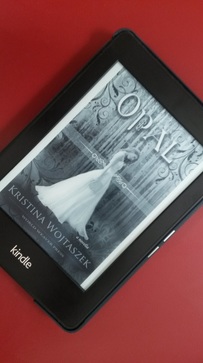 If you have a Kindle and purchase eBooks through Amazon, Amazon automatically transfers them to your Kindle (yay). However, if you buy an eBook outside of Amazon, they won’t transfer it to your Kindle for you (boo). In the words of Douglas Adams from The Hitchhiker’s Guide to the Galaxy, “DON’T PANIC.” Transferring outside eBooks to your Kindle is a breeze. In fact, there are multiple ways to do so. First order of business is to locate your eBook once you have downloaded it. Most of the time, once you download something, you can find your download in the “Downloads” folder when you access your documents. Whether you have a PC or a Mac, that folder can be found on the bottom of your computer screen. If your eBook is downloaded via email or internet, it will almost always be sent to your “Downloads” folder when you access its link to download. Do not try to open it—your computer won't know what to do with it. Use "Save As" or "Send To" to save the file somewhere on your computer you will be able to find it. . Way #1: One important thing to note is that your Kindle uses a .mobi file for all of its eBooks. So, the first step you want to do is plug your Kindle into your computer or laptop in order to access these files. After connecting your Kindle to your computer with its USB cable, you’ll find it available as its own drive letter in the Computer window. Once you have your Kindle plugged in, all you have to do is drag and drop the eBook(s) to your “Documents” folder on your Kindle and you will be good to go! Way #2: If you do not want to plug your Kindle into your computer or laptop, you can send it to your Kindle email address ([email protected]). If you do it this way, you’ll be able to access that eBook on all of your Kindles and Kindle apps under your Kindle email address. You need to set up your personal email address (not your @Kindle.com) to be an “allowed sender” to your Kindle before you can send your non-Amazon eBooks. Here’s how to do that:
After you have added your personal email address(es), you should be able to send your non-Amazon eBooks to your Kindle. PLEASE NOTE: Sometimes Amazon will use wireless carriers like Whispernet to deliver your eBook and will charge you as a result. If you don’t want to risk being charged, you can send your eBook to @free.Kindle.com instead of @Kindle.com to ensure that it is downloaded over Wi-Fi (which is free). Way #3: THERE’S AN APP FOR THAT. It’s called Send to Kindle for PC and it is the quickest way to send eBooks to your Kindle. After you install the app on your PC, you’ll find a “Send to Kindle” option in your right-click menu. Right click on the eBook you want to send to your Kindle and scroll to the “send to Kindle” option and click on it. Boom. Done. You can quickly send documents to your Kindle without the option of emailing them or connecting your Kindle to your computer. After you transfer your eBooks to your Kindle, your last and final steps will be: pour yourself a glass of wine, put on some comfortable pjs, and enjoy your eBook(s)! Transferring eBooks to your Nook, iPad, or Kobo  Process for Nook and Kobo: If you have a Nook or a Kobo, you can transfer eBooks to a program called Adobe Digital Editions (ADE). Once you install ADE, any eBook you receive through email or the internet will automatically be accessible through ADE. So, you will not have to access your “Downloads” folder to transfer your eBook. If you do not have ADE, you can download it on your computer through Adobe’s website. Always make sure you have the newest edition of ADE updated on your computer. Once you have it downloaded, you can follow these steps to transfer eBooks from ADE to your Nook or Kobo:
If you have the NOOK GlowLight Plus, the process to transferring eBooks through ADE will be slightly more complicated. However, the Barnes and Noble support page has a step by step process you can access here. Click on the question “How do I transfer and read Adobe DRM ePub and PDF files?” to read these steps. Also, if you have the Kobo Aura ONE, it has OverDrive built into the device, so you can borrow and download eBooks directly from the Kobo catalog which is super awesome and very convenient. Process for iPad: If you have Adobe Digital Editions downloaded, you can use it to transfer eBooks to your iPad. This may be the easiest way to get eBooks on your iPad.
You should be able to safely disconnect your iPad and enjoy reading your eBooks! There are other ways of transferring eBooks to your Nook, Kobo, and iPad; however, going through Adobe Digital Editions is the EASIEST way possible and there is a lot less hassle to go with it. There you have it! You can now enjoy eBooks received through giveaways and bought from small press websites.  Kristen Bates is a college student who loves to read and write. Star Wars is her primary obsession but she loves all things science fiction, fantasy, and speculative fiction. Kristen hates writing in third person but can be talked into doing it on occasion. Find her on Twitter: @kristenkelly1
Forget the old stereotypes: geeks are sexy. Yes, they are, especially within the pages of our forthcoming contemporary romance anthology, COVALENT BONDS, which can be on your bookshelf just in time for Valentine's Day 2017—or much sooner if you enter the Goodreads Giveaway below.
Covalent bonds aren’t just about atoms sharing electron pairs anymore—it’s about the electricity that happens when you pair two geeks together. This anthology celebrates geeks of all kinds (enthusiasts, be it for comics, Dr. Who, movies, gaming, computers, or even grammar), and allows them to step out of their traditional supporting roles and into the shoes of the romantic lead. Forget the old stereotypes: geeks are sexy.
COVALENT BONDS will be available for pre-order in November (sign up for our newsletter if you want to make sure you don't miss it!) but you can enter now to win a paperback advance review copy through Goodreads. Be sure to add it to your To-Read Shelf!
Goodreads Book GiveawayCovalent BondsEdited by Trysh ThompsonGiveaway ends October 20, 2016. See the giveaway details at Goodreads.
While you wait for the COVALENT BONDS release day (February 14, 2017), check out some of our other great romance titles below.
 by Meg Pontecorvo Okay, I admit it. I sneak glances at porn. Kitchen porn. In the anonymity of the grocery line, I let my eyes wander to the magazine racks. I reach out, feign interest in Glamour or The National Enquirer (as a science fiction writer, I really ought to keep up on the latest news about aliens), but then choose a slick lifestyle magazine: Sunset, or Saveur — even an oldie like Better Homes and Gardens will do, or the latest from brand name gurus like Martha Stewart or Rachael Ray. I hunger not for the recipes, but for the kitchen photo spreads: the acres of counter space, the multiple pantries, the butcher block, an ample island where friends can sit and chat while you cook, skylit high ceilings, double sinks with mosaic backsplash tiles, glass doors opening onto serene patios lush with greenery. And the gadgets: the stainless steel dishwasher (marketed as being “silent as a library”), the stove with extra burners and twin ovens, the easy access fridge with the freezer on the bottom, the power blender, food processor, retro stand mixer, the hanging rack flaunting its variegated pots and pans like a museum mobile by Miro. I swoon — and sometimes need to be nudged by the person behind me to snap to attention and move ahead in line. But I always put the magazine back. As an apartment renter with a kitchen sized for a submarine (no counter space, no dishwasher, a “junior” model fridge and stove), I can only dream. I love to cook, but hate my kitchen. I try to channel inspiration from former New York Times food columnist Mark Bittman, whose tiny apartment kitchen caused a stir online when he posted photos of it on his blog. In his response column, he argues that what counts is the cook, not the kitchen, and he tells tales of cooks, such as the women of his grandmother’s generation, who made fabulous meals without recourse to all the technological conveniences we’ve come to think of as standard. No matter the technology, cooking depends on a person’s ability to learn from experience; as Bittman says, “the equipment can make things more or less difficult, of course, but after all, cooking is cooking.” But if cooking is still cooking in the present, will it also be so in the future? How will advances in technology change it? While cookbook authors like Bittman teach the craft, cooking is also a science, and therefore a ripe subject for science fiction. Although elemental technology, such as heat and cutting tools, improved quality of life for early humans, today we associate kitchen technology with high-end appliances that take the labor, but also the sensuous pleasure, out of cooking. “Nuking” something in a microwave is nearly instantaneous, but also, perhaps, destroys food on a cellular level. The next-horizon technology, food printers, while not as instantaneous as Star Trek’s replicators, matches convenience with environmental sustainability (nutrient pastes made from algae or — ick — insect parts!). The spectre of soylent green aside, food printer proponents envision family members, or military troops, freed from the obligation to eat the same thing as everyone else, and empowered by being able to print separate, individuated meals. This scenario, oddly, ignores the reality that food printers, like microwaves, will most likely enhance (or further degrade) the lives of solitary eaters: over-scheduled people too busy to sit down and share a meal with others. 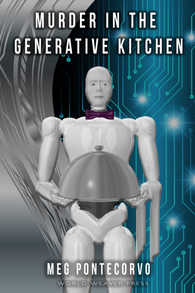 Which raises the question: even today, who has time to cook? Has cooking become a province of the rich? A spectator sport on food TV channels (which we watch as we munch our take-out)? So obsolete that it must be revived by movements (slow food) or propped up by delivery services that bring fresh, ready-to-cook ingredients, and step-by-step instructions on how to cook them, to the home? An oasis in the midst of food deserts? Or, as Bittman suggests, something from which we have so distanced ourselves that, brainwashed by the cooking channels and the kitchen porn, we assume we won’t be able to cook without having an expensive kitchen full of high-tech gadgets? In Murder in the Generative Kitchen, I try to imagine the cooking of the future — not as something done aboard space ships, or by humans colonizing far-off planets, but in the near future United States. McConnery Ellis’s generative kitchen is not only spacious, and equipped with gadgets galore, but programmed to adapt to its users: to tailor the food it prepares to the changing physiological profiles of the Ellises, and to allow a cook different levels of autonomy as it teaches techniques of gourmet food preparation. A dream kitchen, yes, but it’s also a stark contrast to the new normal: juror Julio Gonzalez’s unthinking acceptance of not even having a kitchen in his micro-apartment. His food printer, whose nutrient paste stream is included in the rent, makes him feel modern — and adult. Would I want a generative kitchen? Well, I wouldn’t mind having its robo-barrista, an espresso machine that calibrates caffeine levels to exactly the kick a person needs. And, of course, I would love to have a kitchen as large, and as well-equipped, as McConnery Ellis’s kitchen. But a kitchen so adaptive that it may gain the agency to decide what’s best for me? Maybe not. Right now, I’d much rather just have the time to cook . . .  A writer and artist dedicated to multiple genres, Meg Pontecorvo earned an MFA in Poetry Writing from Washington University in St. Louis and is a 2010 graduate of the Odyssey Writing Workshop. Meg has published a novelette, “Grounded,” in Asimov’s, and her artwork in collage and pen has been featured in experimental video performances in the Bay Area. A native of Philadelphia, she grew up in the Midwest and now shares a small apartment with her partner and cats in San Francisco, where she cooks in a tech-free kitchen. Follow Meg's Author Page on Facebook!  Authors Sharon Johnston and Em Shotwell have started a wonderful project to benefit those impacted by the devastating floods in Louisiana. This is a charity auction where you can bid on book bundles, manuscript critiques, query feedback, signed books and more—all proceeds go to Habitat for Humanity to help rebuild damaged homes in Louisiana. The auction is live now at literarylovefest.wordpress.com and ends on September 17, 2016. World Weaver Press has donated some books to the Speculative Fiction Super Book Bundle and the Romance Super Book Bundle. Additionally, you can bid on a romance manuscript critique from WWP Assistant Editor Cori Vidae, or a line edit from WWP Assistant Editor and Anthologist Rhonda Parrish. But there are so many more great literary items you can bid on to help this cause. Go to literarylovefest.wordpress.com now to see everything up for auction. More information about this fundraiser from the organizers below. LITERARY LOVEFEST FOR LOUISIANA Dates: September 11, 2016- September 17, 2016 Our first auction/fundraiser will benefit the flood victims of south Louisiana. Em Shotwell lives in an area that was badly affected. Though she was lucky and her home did not flood, many homes, businesses, schools, animal shelters, nursing homes, and health care facilities were devastated. Emergency shelters sprang up wherever there was room, and people scrambled to meet the needs of neighbors and strangers alike. It will be many, many months before a great number of people will be able to rebuild their homes and lives. Literary Lovefest has chosen the Baton Rouge area Habitat For Humanity as the recipient of the funds raised. They have been on the front lines, helping people to gut, dry, and de-mold their homes, focusing on those without flood insurance, as well as those unable to help themselves, or without the money to pay a contractor. We chose this organization specifically because their work is witnessed first hand in the community. You can find out more about them, and make a donation right HERE. THE ORGANIZERS You can find out more about Sharon and Em (including links to their social media) by visiting their websites: www.EmShotwell.com smjohnstondotcom.wordpress.com |
World Weaver PressPublishing fantasy, paranormal, and science fiction. Archives
February 2024
|
- Home
-
Books
-
All Books
>
- Beyond the Glass Slipper
- Bite Somebody
- Bite Somebody Else
- Black Pearl Dreaming
- Cassandra Complex
- Causality Loop
- Clockwork, Curses, and Coal
- Continuum
- Corvidae
- Cursed: Wickedly Fun Stories
- Dream Eater
- Equus
- Fae
- Falling of the Moon
- Far Orbit
- Far Orbit Apogee
- Fractured Days
- Frozen Fairy Tales
- Glass and Gardens: Solarpunk Summers
- Glass and Gardens: Solarpunk Winters
- Grandmother Paradox
- Grimm, Grit, and Gasoline
- Haunted Housewives
- Heir to the Lamp
- He Sees You When He's Creepin': Tales of Krampus
- Into the Moonless Night
- Jack Jetstark's Intergalactic Freakshow
- King of Ash and Bones (ebook)
- Krampusnacht
- Last Dream of Her Mortal Soul
- Meddlers of Moonshine
- Mothers of Enchantment
- Mrs Claus
- Multispecies Cities
- Murder in the Generative Kitchen
- Recognize Fascism
- Scarecrow
- Sirens
- Shards of History
- Shattered Fates
- Skull and Pestle
- Solarpunk (Translation)
- Solarpunk Creatures
- Solomon's Bell
- SonofaWitch!
- Speculative Story Bites
- Trenchcoats, Towers, and Trolls
- Weredog Whisperer
- Wolves and Witches
- Anthologies and Collections
- Novels
- Novellas
- Fairy Tale
- Fantasy
- Romance
- Science Fiction
- Urban/Contemporary Fantasy
- Young Adult SFF
-
All Books
>
- Blog
- About
- Contact
- Press / Publicity
- Newsletter Signup
- Privacy Policy
- Store

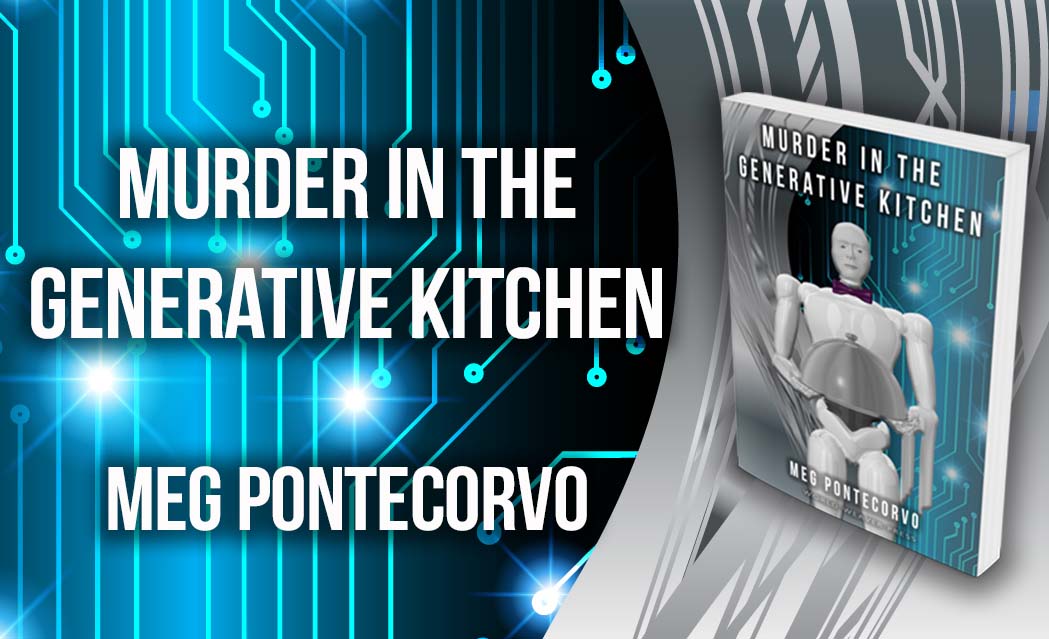
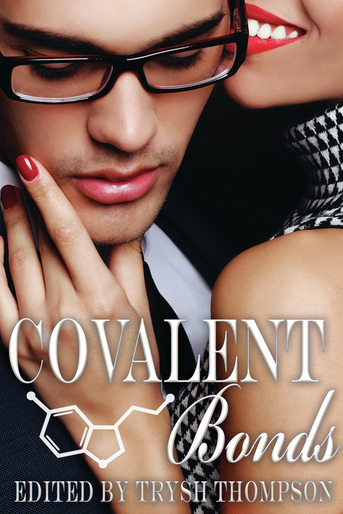

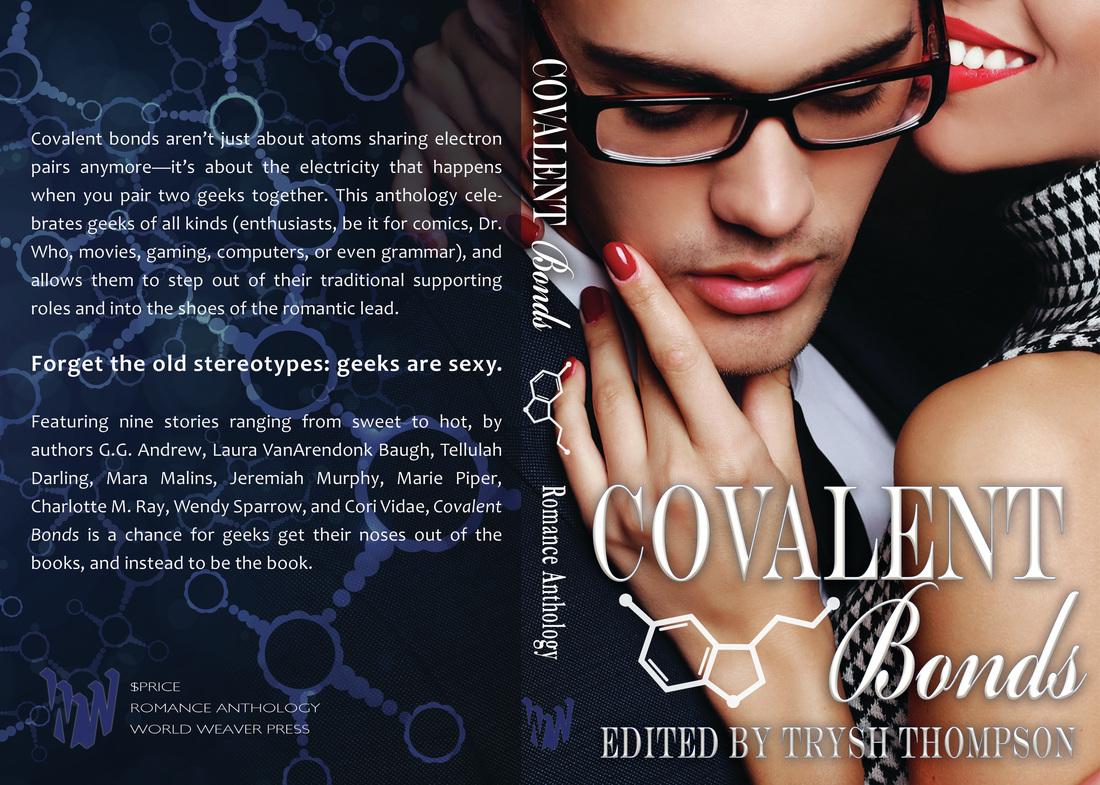

 RSS Feed
RSS Feed